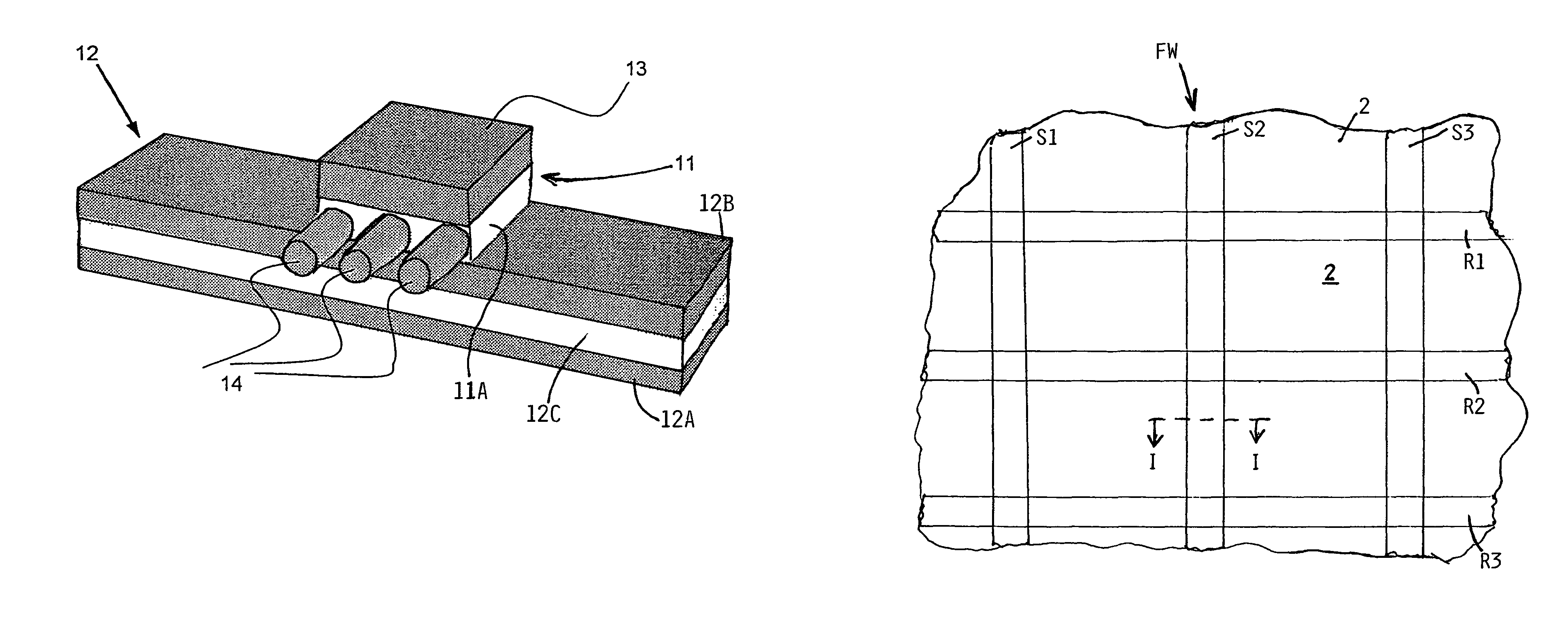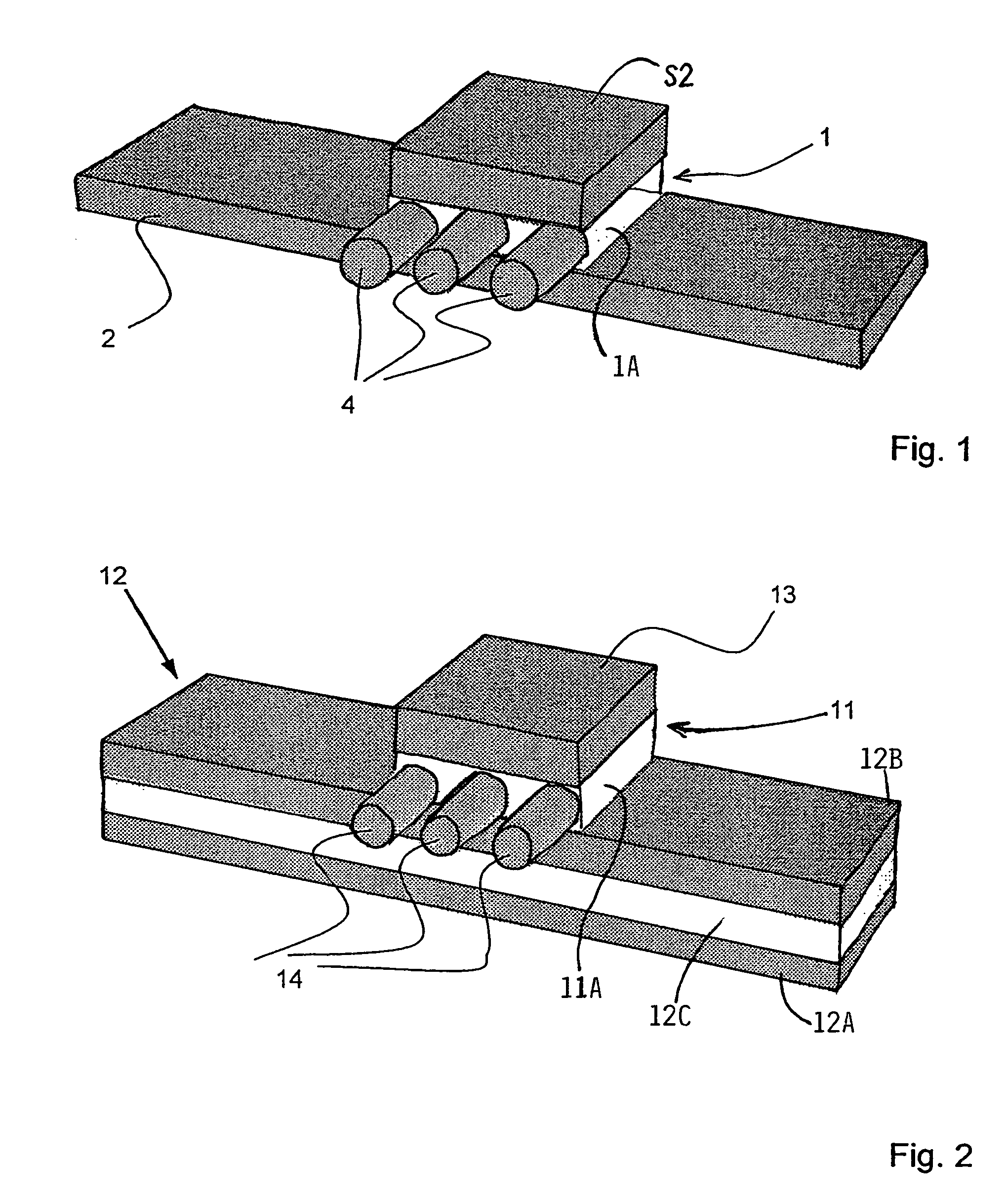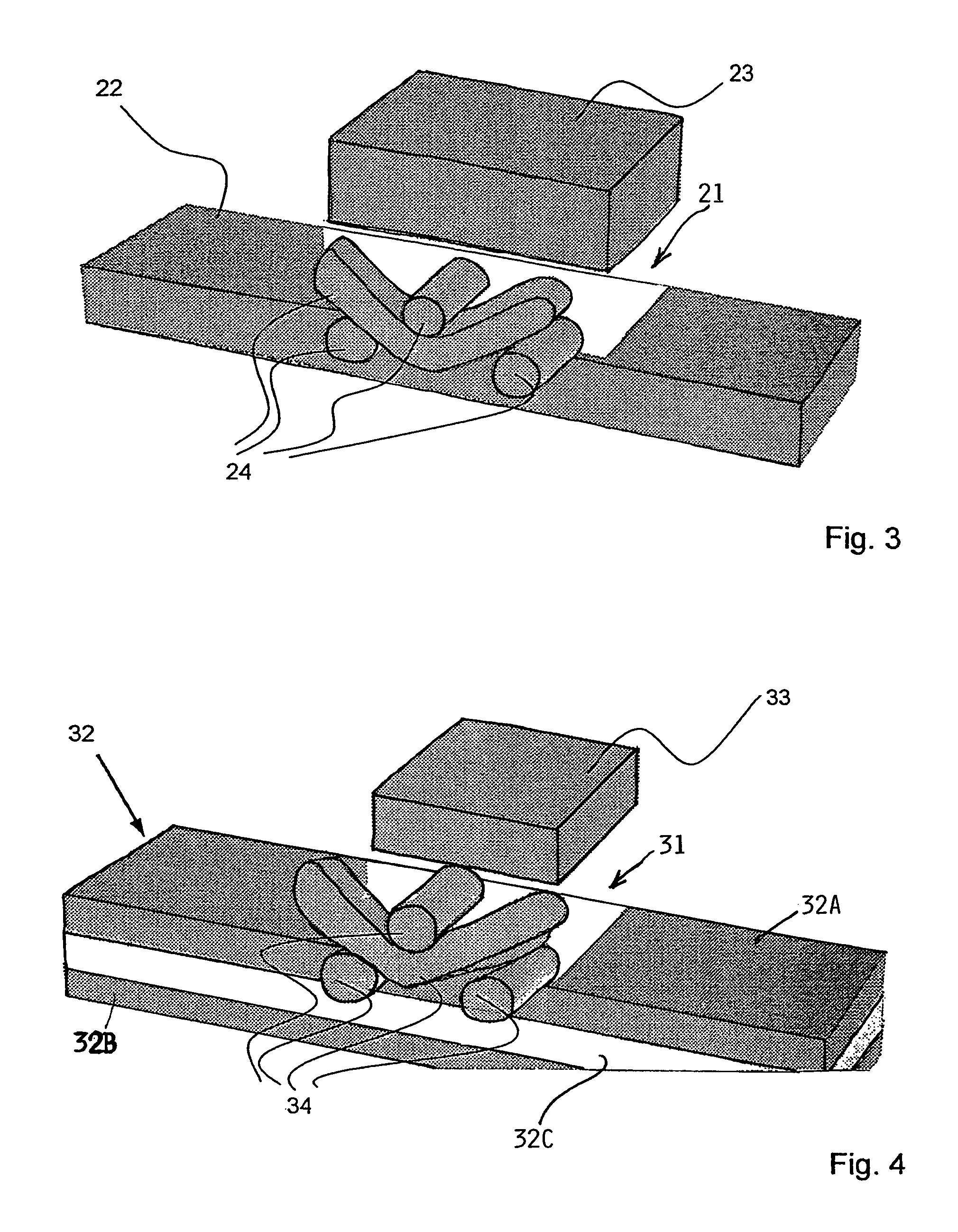Lightweight structure especially for an aircraft and method for making such a structure
a lightweight structure and aircraft technology, applied in the field of aircraft construction, can solve the problems of only possible weight reduction of lightweight structure, low static strength characteristic and low cost of fiber reinforced metal laminate production, so as to reduce the propagation of cracks, increase the useful life of lightweight structure, and reduce the formation of cracks in the outer skin
- Summary
- Abstract
- Description
- Claims
- Application Information
AI Technical Summary
Benefits of technology
Problems solved by technology
Method used
Image
Examples
Embodiment Construction
[0023]FIG. 6 shows a view onto a broken away section of an aircraft lightweight body structure including a frame or framework FW of ribs R1, R2, R3 extending circumferentially around the longitudinal aircraft axis while stringers S1, S2, S3 extend parallel to the longitudinal aircraft axis. The ribs and stringers are adhesively bonded to the inwardly facing surface of an outer skin 2. A plane extending perpendicularly to the plane of the sheet of the drawing and designated by arrows I-I illustrates the position of a reinforcing strip 1 in the perspective view of FIG. 1 between the outer skin 2 and a stringer S2 in the framework FW. More specifically, the reinforcement strips 1 according to the invention are positioned between the outer skin 2 and the ribs, or between the outer skin and the stringers or between the outer skin and the ribs and stringers.
[0024]FIG. 1 shows a reinforcing strip 1 bonded by an adhesive matrix 1A to an outer skin 2 and to a stringer S2. The reinforcing str...
PUM
| Property | Measurement | Unit |
|---|---|---|
| width | aaaaa | aaaaa |
| diameter | aaaaa | aaaaa |
| thickness | aaaaa | aaaaa |
Abstract
Description
Claims
Application Information
 Login to View More
Login to View More - R&D
- Intellectual Property
- Life Sciences
- Materials
- Tech Scout
- Unparalleled Data Quality
- Higher Quality Content
- 60% Fewer Hallucinations
Browse by: Latest US Patents, China's latest patents, Technical Efficacy Thesaurus, Application Domain, Technology Topic, Popular Technical Reports.
© 2025 PatSnap. All rights reserved.Legal|Privacy policy|Modern Slavery Act Transparency Statement|Sitemap|About US| Contact US: help@patsnap.com



